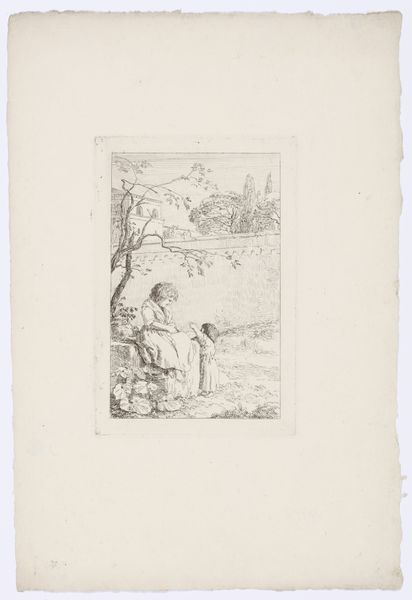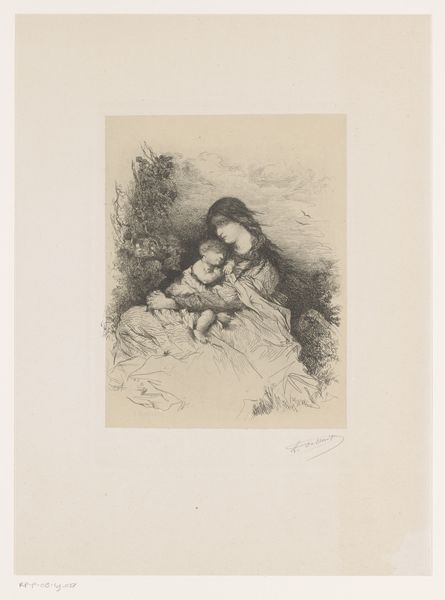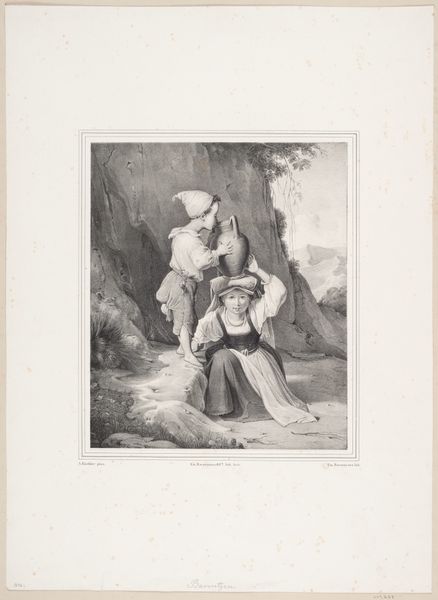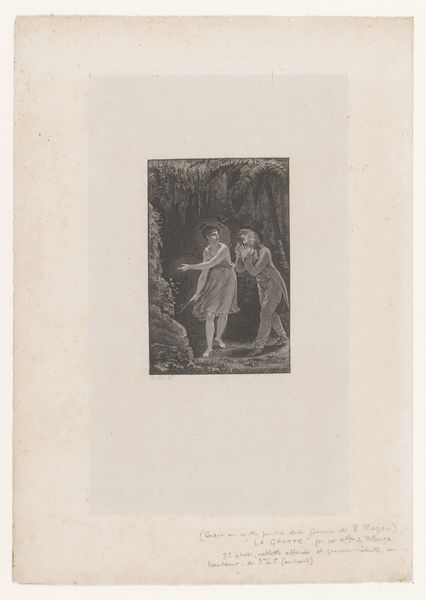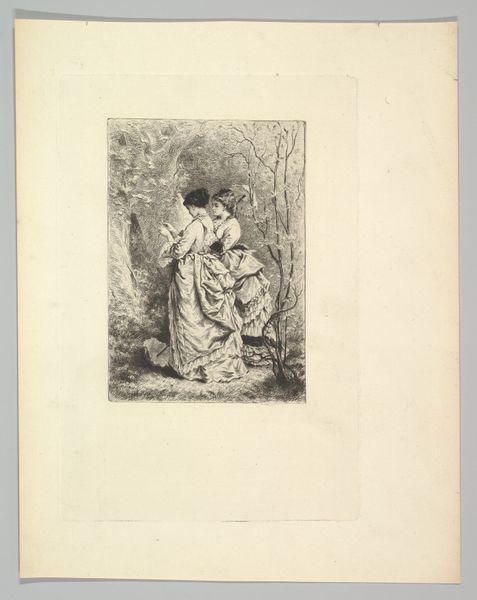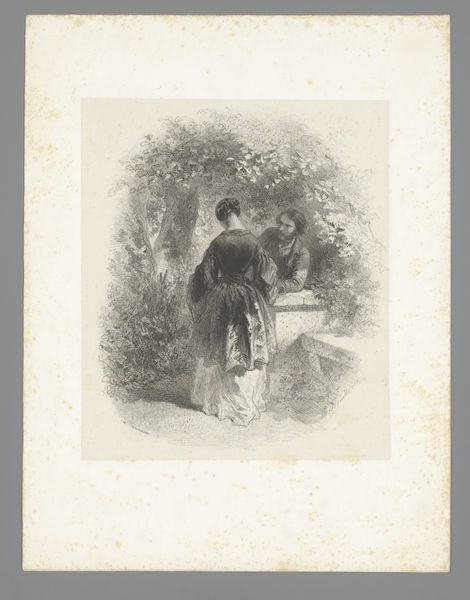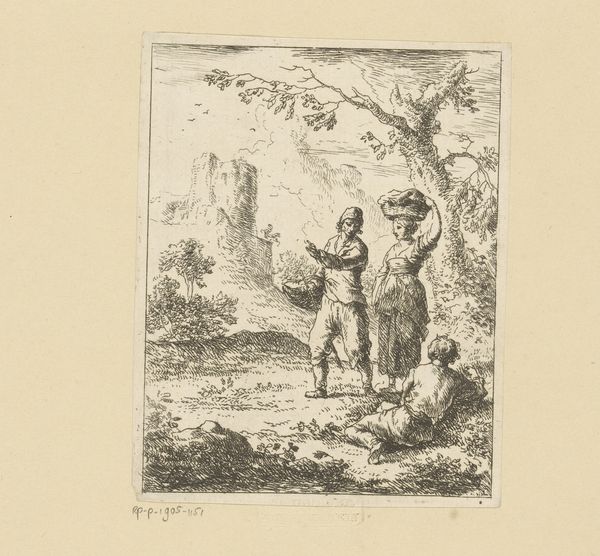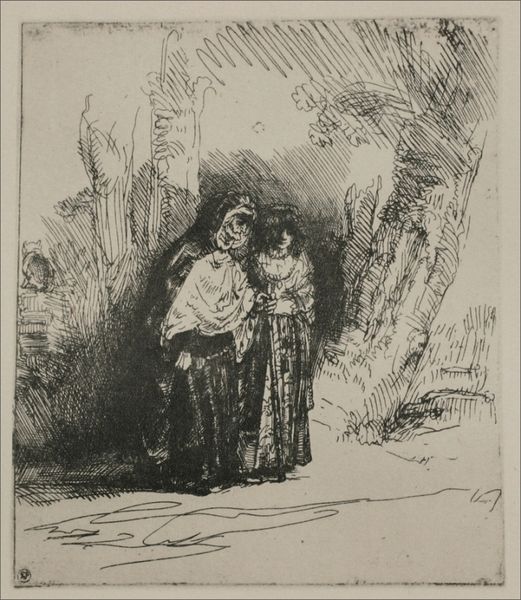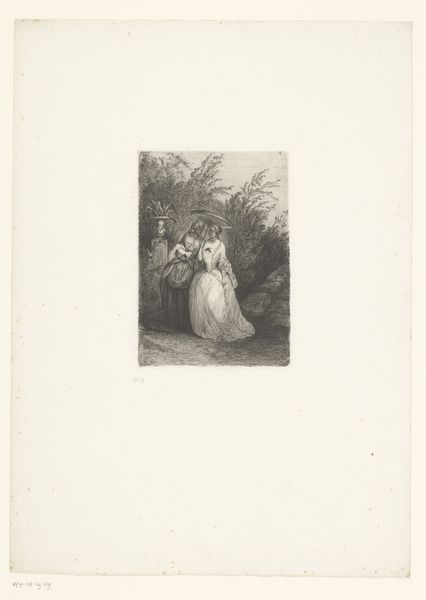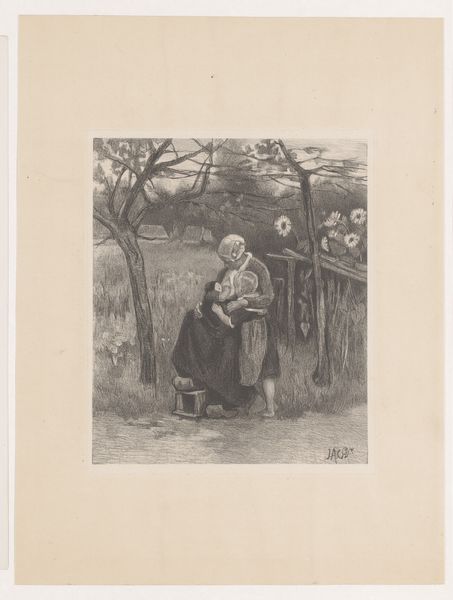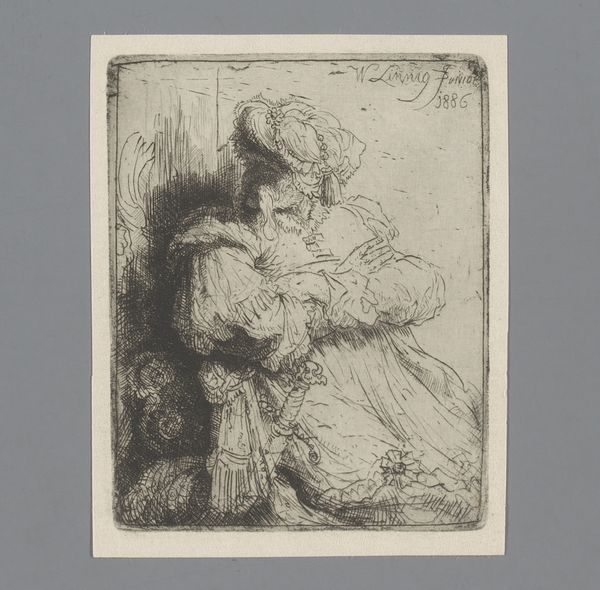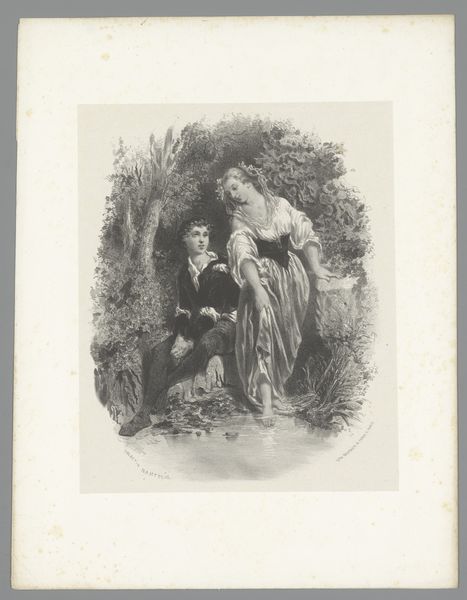
drawing, print, ink, engraving
#
portrait
#
drawing
# print
#
ink
#
genre-painting
#
engraving
Dimensions: height 130 mm, width 114 mm
Copyright: Rijks Museum: Open Domain
Editor: Here we have "The Spanish Gypsy 'Preciosa'," an ink and engraving piece attributed to Pierre François Basan, likely created sometime between 1733 and 1797. It feels quite intimate, almost like a snapshot. I’m struck by the level of detail achieved with, presumably, simple tools and the time involved in the production. What elements stand out to you the most? Curator: Considering Basan's prints, especially in the context of his atelier, brings forth a materialist viewpoint. Notice the precise engraving technique – the labor-intensive process of etching lines into a metal plate, crucial to reproduction and circulation of images during that period. The market for prints like these created the demand for specialists like Basan and workshops which employed many skilled hands. Who consumed these prints, and what kind of narratives did they support or challenge? Editor: So, it's less about the artist's individual expression and more about the whole industry surrounding it? Curator: Precisely! The subject matter, a 'Spanish Gypsy,' speaks to the fascination with the exotic 'other', but how much of that view was formed by similar mass produced imagery? Was Basan's work informed and, thus, shaped by consumer demand and prevailing colonial stereotypes? This artwork functions within the mechanics of visual representation of ethnic groups. How might its wide distribution impact perceptions and potentially reinforce social hierarchies? Editor: I never considered the labor or social implications tied to art made via the printing press, and that changes the way I look at it. Thank you! Curator: Likewise, your reflections point to the need of continuously interrogating the artwork’s origins. A singular artwork like "Preciosa," can open conversations about commodification, cultural representation and access.
Comments
No comments
Be the first to comment and join the conversation on the ultimate creative platform.

